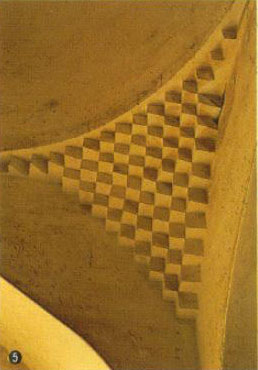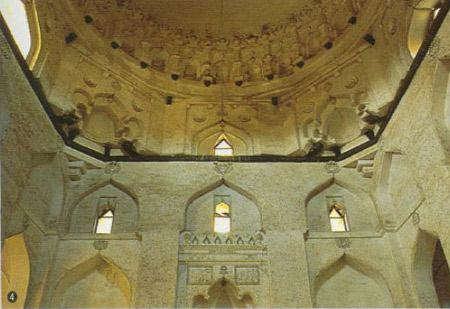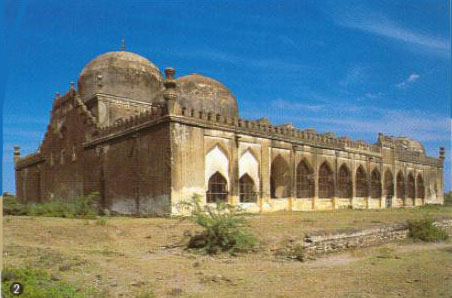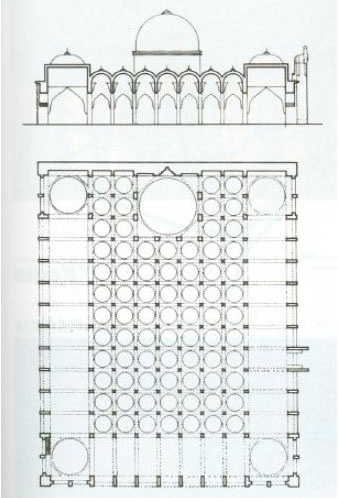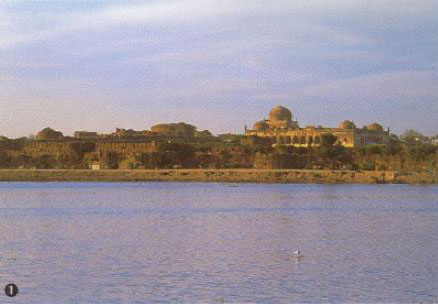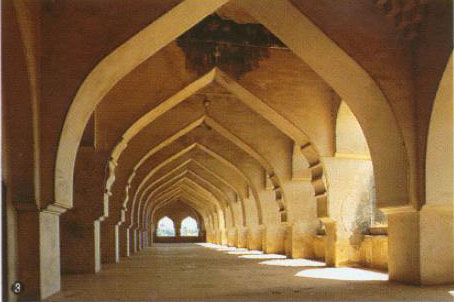GULBARGA
|
| The first to establish Islamic rule in the Deccan plateau was the Bahmini dynasty. Gulbarga was it's capital in 1347 but later shifted to Bidar. Many structures other than the fort still exist. These are tombs and mosques but the palace has been destroyed. On the east side of the city is a big dargah of the saint of the Chisti group, belonging to the 15th-17th century, where even now a lot of pilgrims visit daily. |
|
|
HAFT GUMBAZ(SEVEN TOMBS) ( 14th-15th/Islamic )
|
In the east of the city, there is a group of tombs called Haft Gumbaz, meaning seven mosques. It sports the south Indian tomb style of the early ages. They have been emulated after the tomb style of early ages. They have been emulated after the tomb of the Tughlaq dynasty in Delhi. It is a very archaic construction. The entrance is small, thick walls surround the interior and there is half circular tomb crowned on top. The Firoze Tomb built in the 15th century, sports two floors with many arches and has been decorated with latticework.
|
|
|
JAMI MASJID (FRIDAY MOSEQUE)**(1367/Islamic)
|
| This mosque is in front of the Barah Hisar, inside the fort city, with gates on east and west of the fort. It has a distinctly Persian design. It is said that the construction of the mosque was completed in the 15th century |
|
|

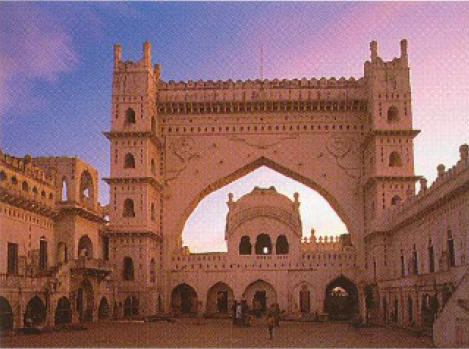
-1.jpg)
-2.jpg)
-3.jpg)
